Battery Types & Safety
Batteries power the modern world. Learn how to recognize the different types you may encounter, as well as safety tips, and their recycling process.
Table of Contents
Household Batteries
These are the most common types of batteries powering devices you use everyday. Some are rechargeable, you can plug them in to charge and get multiple uses before the battery needs to be replaced. Some are non-rechargeable or single-use, once they are fully discharged, they should be recycled.
Rechargeable

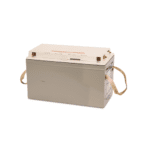
Non-Spillable/Sealed Lead Acid
Small to medium, dry-cell batteries, sealed, rechargeable
- Rectangular
- Custom sizes in hard plastic case
- Wheelchairs
- Scooters
- Golf Carts
- Ride-On Electric Toys
- Boats
- RVs
- Military Aircraft
- Portable Tools
- Field Equipment
- Non-spillable
- Can cause fire if short-circuited
- Can cause fire if punctured, damaged, improperly charged, or improperly disposed
The battery is broken apart in a shredder. The acid is collected and the rest is sent to a hammer mill even into even smaller pieces. The small battery pieces are then placed into a vat, where the lead and heavy materials fall to the bottom and the plastic (typically polypropylene) floats. At this point, the plastic pieces are scooped away and the liquids are drawn off, leaving the lead and heavy metals. Each of the materials goes into a different recycling “stream”.
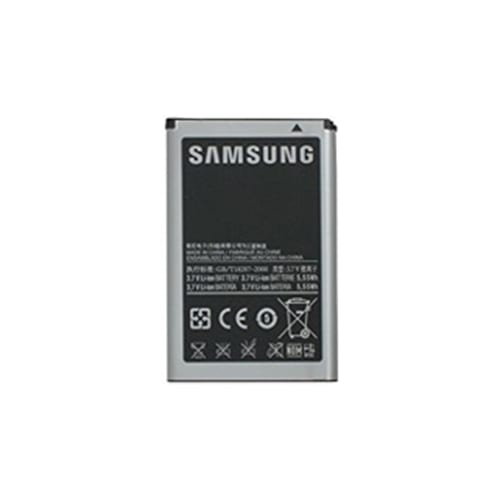

Lithium-ion (Li-ion)
Small dry cell batteries, sealed, rechargeable
- Custom sizes in hard or soft plastic case
- Small Cylinder
- Standard AA, AAA Sizes
- Cellphones
- Tablets
- Laptop Computers
- Wireless Accessories
- Power Tools
- Video cameras
- Handheld Electronics
- Electric & Hybrid Automobiles
- (see Hybrid Automobile section )
- Non-spillable
- Can cause fire if punctured, damaged, improperly charged, or improperly disposed
Mechanical separation followed by hydrometallurgical or pyrometallurgical treatment is used to recover the metals (nickel, iron, cobalt, lithium) and plastics of lithium batteries for reuse in new products.

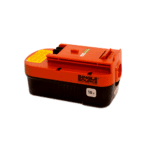
Nickel-Cadmium (NiCd)
Small dry-cell batteries, sealed, rechargeable
- AAA
- AA
- C
- D
- Small-Cylinder
- Plastic Film-Wrapped Packs of Cylindrical Cells
- Custom Sizes in Hard Plastic Case
- Older Cellphones
- Older Laptop Computers
- Power Tools
- Handheld Electronics
- Toys
- R/C Hobby Vehicles
- Medical Equipment
- Non-Spillable
- Cadmium is a toxic heavy metal
- Never incinerate – produces toxic cadmium vapors
Thermal treatment under vacuum is used to selectively recover the cadmium. A Ni-Fe alloy and plastics are also recovered.
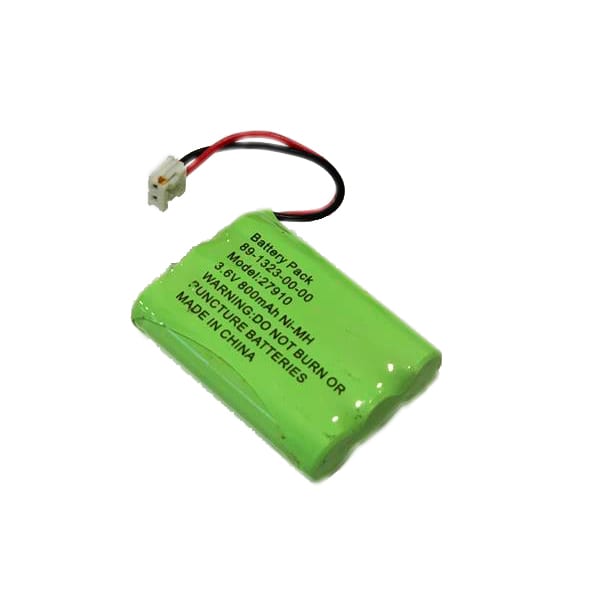
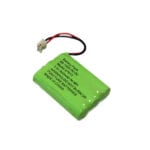
Nickel Metal Hydride
Small dry-cell batteries, sealed, rechargeable
- AAA
- AA
- C
- D
- 9 volt
- 12 volt
- Plastic Film-Wrapped Packs of Cylindrical Cells
- Small-Cylinder
- Custom Sizes
- Older Cell phones
- Older Laptop Computers
- Power Tools
- Cameras
- Handheld Electronics
- R/C Hobby Vehicles
- Early Hybrid Automobiles
- (see Hybrid Automobile section)
- Non-Spillable
- Non-Toxic
The batteries are heated to remove the electrolyte and plastics. The remaining metals can be provided to various industries.
Non-Rechargeable
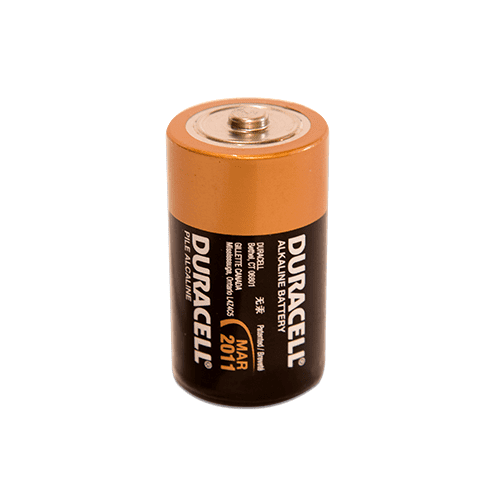
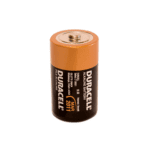
Alkaline & Zinc Carbon
Small dry-cell batteries, sealed, non-rechargeable. Zinc carbon batteries are labeled general purpose or heavy duty.
- AAA
- AA
- C
- D
- 9-Volt
- Button Cells
- Smoke Detectors
- Cameras
- Toys
- Watches
- Handheld Electronics
- Non-spillable
- Non-toxic
- Can leak corrosive materials with age
Can be recycled! Secondary commodities from the recycling process include:
– Zinc manganese concentrate (ZMC) used as a micronutrient in fertilizer
– Paper, plastic, brass used to strengthen concrete in road construction
– Steel used in the manufacturing of new steel based products
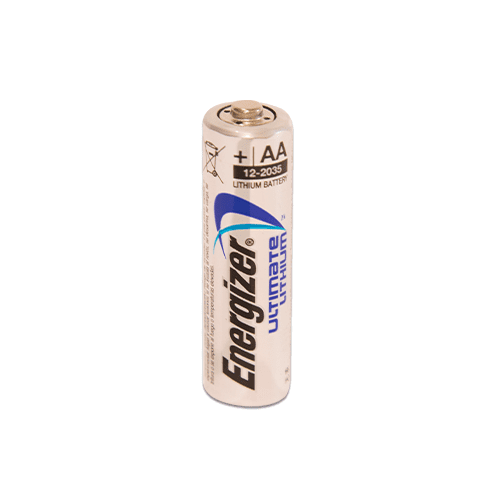
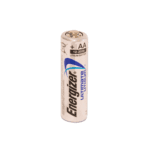
Lithium (Primary)
Small dry-cell batteries, sealed, non-rechargeable.
- Button Cells
- AAA
- AA
- 9-Volt
- Small-Cylinder
- Custom Sizes
- Watches
- Cameras
- Handheld Electronics
- Tire-Pressure Sensors
- Alarms
- Memory Backup
- High-Temperature Applications
- Pacemakers
- Remote Car Locks
- Smoke Detectors
- Non-spillable
- Can cause fire if short-circuited, punctured, damaged, improperly charged, or improperly disposed
High temperature metal reclamation (HTMR) is used to recover the metals.


Mercury
Outdated type of small dry-cell batteries, sealed, non-rechargeable. Outlawed for public use by The Battery Act of 1996. May still be used by the military.
- AA
- 9-Volt
- Small-Cylinder
- Button Cells
- Custom Sizes
- Cameras
- Medical Devices
- Military
- Non-spillable
- Toxic
- Never incinerate – produces highly toxic vapors
Heavy metals are recovered through a controlled-temperature process.
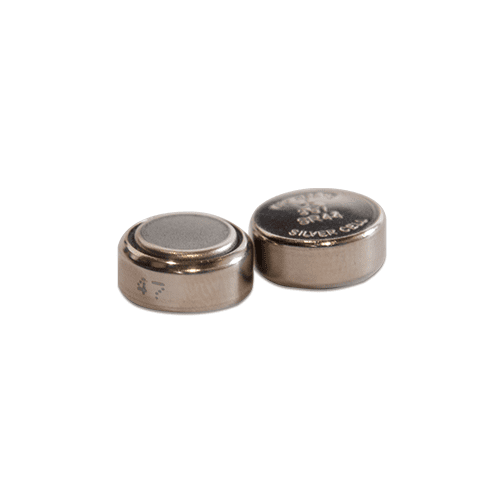
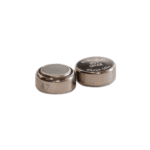
Silver Oxide
Small to large dry-cell batteries, sealed, non-rechargeable.
- Button cells
- High- Voltage Small-Cylinder
- Large Custom Sizes
- Watches
- Hearing Aids
- Cameras
- Torpedoes
- Aircraft
- Non-Spillable
- Non-Toxic
Metals are recovered through a controlled-temperature process.
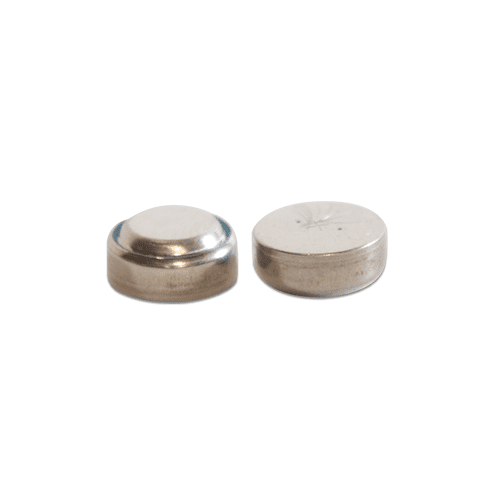
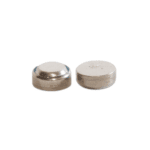
Zinc Air
Small dry-cell batteries, sealed, non-rechargeable.
- Button cells,
- 9-Volt
- Custom Sizes
- Hearing Aids
- Watches
- Non-Spillable
- Non-Toxic
Zinc-air batteries are recycled in the same way as alkaline batteries or by the high temperature metal reclamation (HTMR) method.
Industrial Batteries
While the everyday battery user may never run into these batteries, they exist to power the heavy duty applications like machinery, railroad and backup power for data centers, utilities, or telecommunications.
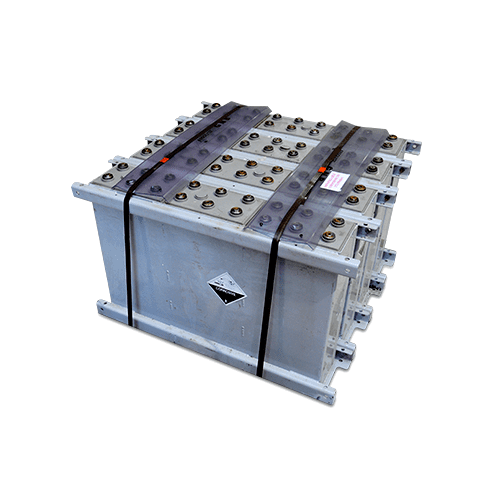
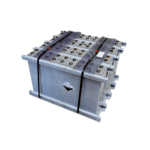
Absolyte
Large, lead acid & cadmium, vented (VRLA), rechargeable
- Rectangular in steel racks
- Telecommunication Systems
- Railroad Switchgear & Signals
- Solar Arrays
- Uninterruptible Power Supply
- Non-spillable
- Lead and cadmium are toxic heavy metals
- Contains acid electrolyte that is corrosive if spilled
The battery is broken apart in a hammer mill, a machine that hammers the battery into pieces. The broken battery pieces are then placed into a vat, where the lead and heavy materials fall to the bottom and the plastic floats. At this point, the polypropylene pieces are scooped away and the liquids are drawn off, leaving the lead and heavy metals. Each of the materials goes into a different recycling “stream”.
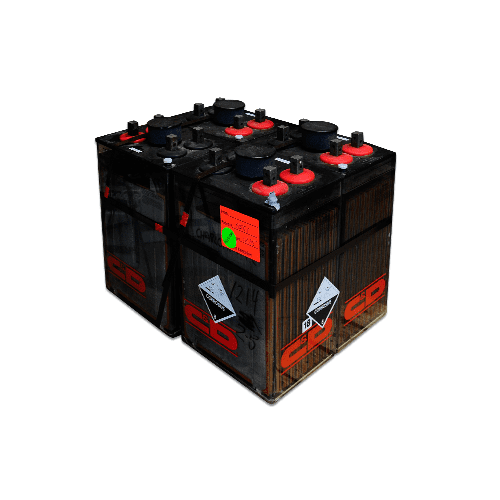
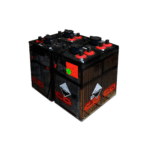
Large Flooded Cell
Small dry-cell batteries, sealed, non-rechargeable
- Hard case, rectangular
- Stationary Power
- Telecommunication Systems
- Utility Systems
- Uninterruptible Power Supply
- Spillable
- Lead is a toxic heavy metal
- Contains large quantity of acid electrolyte, electrolyte corrosive if spilled
- Extremely heavy
The battery is broken apart in a hammer mill, a machine that hammers the battery into pieces. The broken battery pieces are then placed into a vat, where the lead and heavy materials fall to the bottom and the plastic floats. At this point, the polypropylene pieces are scooped away and the liquids are drawn off, leaving the lead and heavy metals. Each of the materials goes into a different recycling “stream”.
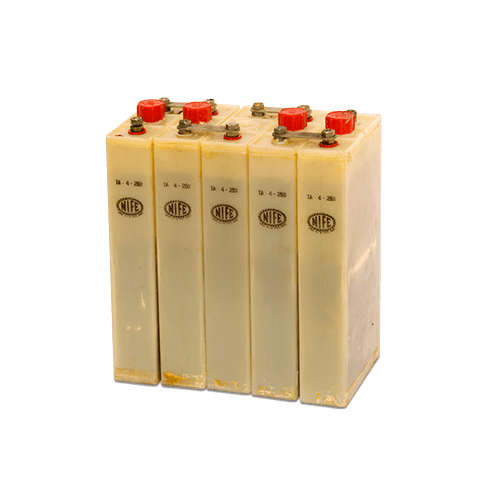

Nickel Iron
Medium to large, flooded cell batteries, vented, rechargeable, very long lasting
- Metal Case, Rectangular
- Railroad Signals
- Mining Operations
- Declining in use compared to Lead Acid batteries
- Spillable
- Non-toxic
The battery is broken apart in a hammer mill, a machine that hammers the battery into pieces. The broken battery pieces are then placed into a vat, where the lead and heavy materials fall to the bottom and the plastic floats. At this point, the polypropylene pieces are scooped away and the liquids are drawn off, leaving the lead and heavy metals. Each of the materials goes into a different recycling “stream”.

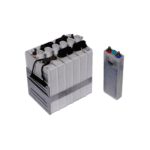
Wet Nickel Cadmium (NiCd)
Small to large, flooded cell batteries, vented, rechargeable, pocket-plate and sinter-plate types
- Hard case, tall rectangular
- Multi-cell in metal or wood cases
- Can be stand alone cell
- Emergency power
- Telephone Systems
- Solar Arrays
- Railroad Switching Gear
- Marine Applications
- Aviation Applications
- Spillable
- Cadmium is a toxic heavy metal and known carcinogen
Thermal treatment under vacuum is used to selectively recover the cadmium. A Ni-Fe alloy and plastics are also recovered.


Steel Case
Large, flooded cell batteries, lead acid, vented, rechargeable
- Individual cells within a steel casing
- Forklifts
- Industrial Machinery
- Motive Power
- Spillable
- Lead is a toxic heavy metal
- Contains acid electrolyte that is corrosive if spilled
Battery is disassembled to separate the steel from the cells. The cells are then recycled like other lead acid batteries.
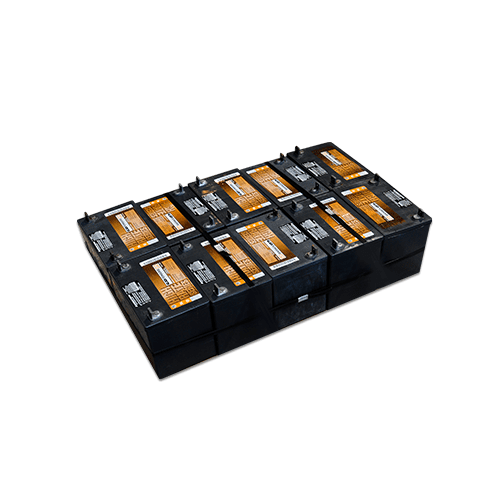

Uninterruptible Power Supply (UPS)
Medium to large, flooded cell batteries, typically lead acid, vented (VRLA), rechargeable
- Hard case, rectangular
- Multi-cell in steel racks
- Uninterruptible Power Supply
- Stationary power
- Non-spillable
- Contains some acid electrolyte
The UPS units are disassembled to separate the batteries from the other recoverable materials, such as electronic scrap, metals, and plastics. The batteries are then recycled in the same way as other lead acid batteries.
Vehicle Batteries
While still very large and possibly intimidating, these less spillable and more user friendly batteries power our cars, motorcycles, boats and other motorized vehicles.
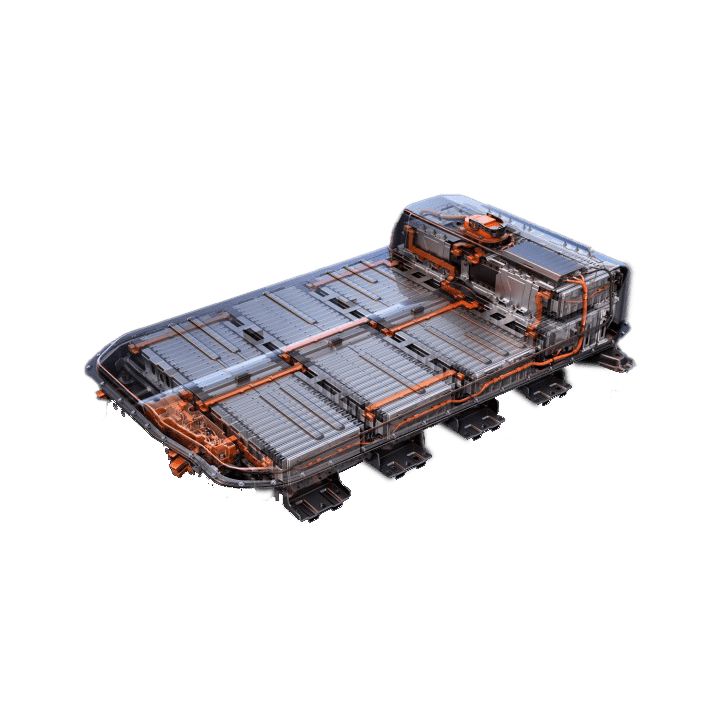
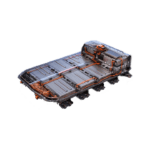
Electric Automotive
Battery from a fully electric vehicle. Large Li-ion dry cell, sealed, rechargeable.
- Full Assembly
- Packs
- Cells
- Fully Electric Vehicles
- Micro Mobility Devices
- High Voltage–Dangerous
- Can cause fire if punctured, damaged, improperly charged, or improperly disposed
The batteries are disassembled into smaller units called modules. The modules are then mechanically separated and the components are recovered in the same process as small Li-ion batteries. Mechanical separation followed by hydrometallurgical or pyrometallurgical treatment is used to recover the metals (nickel, iron, cobalt, lithium) and plastics of lithium batteries for reuse in new products.


Hybrid Automotive
Large, dry-cell batteries, NiMH and Li-ion most common, sealed, rechargeable
- Large pack of small cells
- Cylinders
- Pouches
- Hybrid Automobiles
- High Voltage–Dangerous
- Can cause fire if punctured, damaged, improperly charged, or improperly disposed
The batteries are disassembled into smaller units called modules. The modules are then mechanically separated and the components are recovered in the same process as small Li-ion batteries. Mechanical separation followed by hydrometallurgical or pyrometallurgical treatment is used to recover the metals (nickel, iron, cobalt, lithium) and plastics of lithium batteries for reuse in new products.


Automotive Lead Acid
Medium to large, flooded cell batteries, vented, rechargeable
- Hard Case, Rectangular
- Multi-Cell
- Automobiles
- Motorcycles
- Boats
- Outdoor Power Equipment
- Spillable
- Lead is a toxic heavy metal
- Contains acid electrolyte that is corrosive if spilled
With a 99% recycling rate, lead acid batteries are among the most recyclable batteries. Every part of the battery is recycled and the lead usually goes back into making new batteries.


VRLA
Medium to large, maintenance-free, vented (VRLA), rechargeable
- Hard Case, Rectangular
- Multi-Cell
- Automobiles
- Motorcycles
- Boats
- Wheelchairs
- Emergency Lighting
- Uninterruptible Power Supply
- Non-spillable
- Lead is a toxic heavy metal
- Contains some acid electrolyte
With a 99% recycling rate, lead acid batteries are among the most recyclable batteries. Every part of the battery is recycled and the lead usually goes back into making new batteries.